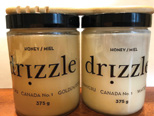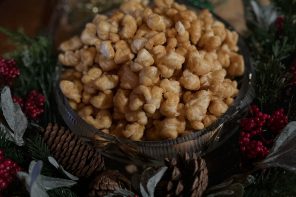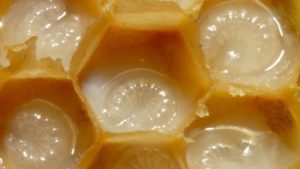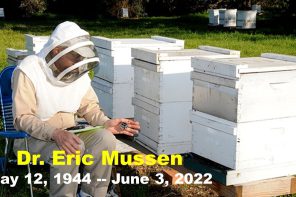By: Mark Winston
I led a research laboratory for 35 years at Simon Fraser University (SFU), running around 200 honey bee colonies at our peak. Besides data, we also produced many thousands of pounds a year of pretty good honey. Don’t take my word for it; our customers would call as early as May or June to line up for the honey we harvested in August and sold in September.
Why the strong customer base? For one thing, it was excellent honey. Never heated or filtered (both processes drive off aromatics and flavor), our honey was collected from a delightful mix of wildflower nectar that blended into an exquisite taste. The proceeds from honey sales went to support graduate students, and we dropped off quite a few cases to food banks on and off campus.
We had a brand, Heavenly Honey, and a distinctive hand-drawn label on each jar. I traded my barber four jars of honey for a haircut, and soon many of his customers were clamoring to buy a few jars. We gave jars away to anyone at the university who had helped us over that past year, from the President to the cheerful women with Italian accents who made specialty sandwiches at the SFU cafeteria, to the staff who cleaned our lab. Those free jars quickly translated into a wide customer base from the colleagues and friends and families of those who received their annual free jar.
I’ve always been attracted to smaller-scale, artisanal beekeeping, and to small batches of carefully curated honey that come with a story about the beekeepers and the land from which it was harvested. Thus, it’s not surprising that I was intrigued when I recently came across Drizzle, a Canadian honey marketing firm out of Calgary, Alberta. 
Drizzle was founded by backyard urban beekeeper Aja Horsley. She was working as an urban agriculture researcher in Calgary; one of her projects involved rooftop beekeeping for culinary honey. As she notes on their website, Drizzle was inspired because “I believe in responsibly producing honey while also creating a collection of the highest quality raw honey products.”
She saw a potential market for raw honey and started the Drizzle brand, initially selling honey from other urban beekeepers but eventually expanding to bottle and market honey produced by rural beekeepers in a manner consistent with her values for sustainable beekeeping
Drizzle’s branding and marketing are brilliant, much more sophisticated than our Heavenly Honey marketing, focused on specific but broad subsets of consumers, particularly those concerned with sustainability and personal health. Their client base appreciates food that is perceived as high quality rather than mass-produced, and comes with details and stories of terroir: the soil, weather, climate and people that make each bottle of honey unique. Drizzle wants to make us feel good about buying their honeys: “Better for you, better for your cooking, and better for the planet. Elevate your table with deliciously raw, superfood powered honey while helping honey bees thrive.”
What makes Drizzle honey better than the typical packaged honey found on North American supermarket shelves? Drizzle tells us on their website that their honey is “natural,” “raw,” “unheated,” “unfiltered,” and “gluten-free,” terms that resonate with consumers interested in quality assurance and superior products.
“Natural,” is one term with little meaning at the hive, since all honey produced from floral nectar is natural. But it does have a compelling relevance once honey is packaged for sale. In recent years we’ve seen epidemics of honey adulterated with corn syrup and other sweeteners, and imported honey with detectable levels of banned pesticides. Indeed, the largest food fraud case in U.S. history had to do with adulterated honey imported primarily from China, and bottled and sold by American honey packers. Assurances that Drizzle’s honey really is honey is of great value to careful consumers.
“Raw, unheated and unfiltered” are substantive terms that are better defined, and may indeed translate into better tasting and more healthful honey. “Raw” simply means the honey is as found in a bee hive. After being removed from the hive, raw honey hasn’t been heated or heavily filtered, although it may be strained to take out debris and air bubbles. Most commercial honeys are processed with both heating and filtering, and Drizzle’s marketing appeals to consumers who believe that raw honey has more taste and heightened health properties compared to processed honey.
Heating drives off some of the aromatic compounds that give each honey its distinctive taste and smell, and so consumers eating raw honey will have a more flavorful experience. Filtering does remove pollen, and while honey is not full of pollen, it does contain some unless it’s been highly filtered, and that pollen may contribute to the taste and nutritional quality of the honey.
Health claims around raw honey are difficult to prove, but the rationale for raw honey being healthier is that it contains minerals, enzymes, vitamins and antioxidants, nutrients that are reduced or eliminated when honey is heated and filtered. Here we run into the conundrum that characterizes many claims for bee products: there’s not been a lot of rigorous science directly linking honey and health, but there is considerable folk wisdom and passionate believers in the healthful qualities of raw honey.
As to gluten free: well, that’s just clever marketing. Honey doesn’t contain gluten, unless it’s been contaminated. The Drizzle marketeers are recognizing a fad among many of today’s consumers who avoid gluten, not only because of celiac disease but also due to an allergy or sensitivity. And Drizzle also points out that their honey is non-GMO, a term that reassures consumers concerned about genetically modified organisms.
Drizzle also attracts another particular swath of consumers, those for whom “local” and “sustainable” are important. It’s a Canadian company, and they make a point of advertising that their honey is “Canadian Made,” and carries a sustainable designation by the Certified B corporation that certifies products that “meet the highest standards of social and environmental impact.” The details of what Drizzle considers sustainable beekeeping are vague on their website, but include honey sourced from “honey pastures” that are remote, and away from pesticides.
Drizzle is also certified Kosher, which opens up an additional market. A niche, perhaps, but yet another example of how certification to attract a specific clientele can add to the sales potential of a product.
Their final level of certification is as a female founded and run enterprise, with two certifiers, WBE Canada and Women owned. Beekeeping in general has seen an increasing frequency of women involved at all levels over the last few decades, a trend worth celebrating, and again a profile for Drizzle viewed favorably by a specific set of consumers.
Drizzle has not only taken the artisanal route in the honey they market, but made the decision to brand their honey away from the general market and towards specific, albeit still broad, subsets of consumers. Their brand may turn off some sets of consumers, but is highly attractive to those who are health and sustainability conscious, gluten avoiders, and those favorable to gender equality. Drizzle’s advertising appeals to all these segments.
Of course, their honey will ultimately rise or fall on quality. Marketing may stimulate the first purchase, but at the high price point their honey retails at, it’s going to have to satisfy more than just friendliness towards their brand. Drizzle’s Golden Brand honey sells online at $13.40 (U.S.)/lb., considerably pricier than most non-specialty retail honeys in the United States.
So how tasty is Drizzle honey? Well, it’s pretty darned good, flavorful and aromatic. I ordered their Golden and White honeys, both of which arrived crystallized, with nicely designed labels, and with flavor-specific suggestions for pairing with other foods. The White is “a floral, delicate raw honey that is buttery in texture and perfectly paired with fresh, light flavours of fruit, lattes, and warm bread.” The Golden is a “rich, bold, raw honey perfectly paired with daring flavours like hot sauce, aged cheese or a cup of strong coffee.”
Apparently others agree. Drizzle now has 650 retailers across Canada, has been profiled in numerous print outlets from airline to food magazines and was successful at attracting an investment from Dragon’s Den entrepreneur Arlene Dickinson.
Drizzle offers a pathway for those who want to get off the treadmill of industrially produced honey, and on to the slower but perhaps as profitable a market for artisanal honey with an identified brand.
Think about it: What’s special about your honey, and how can you add value through focused marketing? Honey, after all, is way more than just a carrier for sugars. Let’s make honey the high-end product it deserves to be.
Mark L. Winston is a Professor and Senior Fellow at Simon Fraser University’s Centre for Dialogue. His most recent books have won numerous awards, including a Governor General’s Literary Award for Bee Time: Lessons from the Hive, and an Independent Publisher’s Gold Medal for Listening to the Bees, co-authored with poet Renee Sarojini Saklikar.









